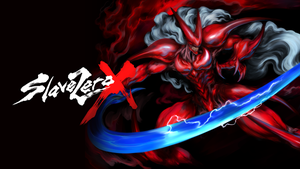9 Things I learned from working on Asphalt 8
This would be the third article in my quest to re-examine may previous projects to understand what I learned from each.

Working on Asphalt 8 as a system designer was an enriching experience. Being able to focus on specific game systems, like car behavior, controls or camera is an excellent way to improve design skills.
How when something is fun it’s important to make it accessible
In the beginning, Asphalt 8 wasn’t airborne. The barrel and drift roll were entertaining, but very hard to achieve maneuvers. During a talk with our studio head, he asked: if we have something that’s very fun, why we keep it just for a handful of players?
So we started to talk with the programmers and see what aid systems we can use to make them accessible, but still require some skill. They obliged, and next day all team was jumping around like happy rabbits.
This is how we found our winning game feature.
Thanks Alexandru Adam, I always appreciated our design talks.
How important is to understand extremes when tuning parameters
When tuning parameters, many start with the middle and take some timid swipes to the left and right, feeling for the proper values. We took a different approach and went directly for the highest and lowest extreme values of each parameter. The middle always took care of itself afterwards.
For which car speeds the game becomes fun? Between which field of views do we get a satisfying speed sensation? How much should the camera pivot during a drift to offer a cinematic experience, but without confusing the player?
It’s true, sometimes the big, fascinating questions above get interrupted by smaller, perplexing ones, like “Why my opponent just disappeared through that wall?”, but overall we found this to be an efficient tuning method.
Thanks John Carmack for the very useful quote “if you want to see how a parameter works, double it’s value”.
How perseverance can pay off
There’s a huge gap between having a physics system and having a fun game. The path from one to another was through sheer resilience in doing the dullest things over and over again.
Go up the sidewalk, go down, suspension looks non-existent, modify the parameters, restart, go up the sidewalk, go down. Accelerate, take a left, car direction too stiff, change parameters, restart, car flips over during high speed curves now, change parameters, restart and so on, week after week.
On the other hand, when finally driving a fully tuned car, it really felt great.
Thanks, Antoine Cabrol, with whom I shared the burden of car tuning.
How not to move to something new until you nailed what you are working on
Under the deadlines pressure, the temptation to always add new game elements is big. The downside is that you can end up with a mess of related components that are unfun, unable to tell which one holds the blame.
For Asphalt, we decided to withstand that pressure and make sure each feature is properly fun before proceeding further. It was a number of clear steps and elements to take care of: we nailed acceleration, then focused on car turning. Nailed the turns, then drifting, then takedowns.
Thanks HQ, for your patience.
How to solve seemingly insurmountable problems
No smartphone racing game featured serious car wrecking before Asphalt 8: the licensors were very skeptical about car damage. On the other hand, we felt spectacular takedowns were a must for our game.
To persuade the licensors we focused first on the positive parts of our feature. No human beings are harmed (that was easy - there were no humans in the game). There are no penalties on the car’s performance (after a takedown, the car is respawned in factory condition). Then it took all my amateur filmmaking skills to show how each car gets crashed, which elements take damage and how it looks like. In the end, all licensors approved the feature, and there was much rejoicing.
Thank you, car manufacturers.
How to make an empty city feel lived
How do you make your tracks look like real, lived cities, when you don’t have any people in them?
The answer is: you spend a lot of time in Google Earth until you understand it. What’s really making Tokyo, Tokyo? There’s clearly some big things everyone expects: the lights, the ads, the massive buildings. To make it feel like a real city, however, it’s the little things that count: lanterns, street lights, fences, trash cans.
It took a lot of back and forth with the background artists: How should we place them so they make sense? Should we make this one destructible? What size should it be for players to actually see it? In the end all this back and forth payed off.
Thank you, Ian Stubbington.
How to properly take inspiration from other games
There’s always a fine line between being inspired and outright stealing from other games. Many developers felt the wrath of players for missing this mark. There are 3 stages of doing it, some better than others:
The first stage is just copying it without understanding it. After Candy Crush exploded in popularity, it was hard to find a mobile game without a similar level selection map. Very few understood what made the Candy Crush map interesting was it’s the sense of exploration, the curiosity, the feeling of “I can’t wait to get there and see what this is”.
The next stage would be studying it. Making sure you understand what’s making it good, even if it means taking a youtube movie and studying it frame by frame. How did they achieve their feeling of speed? It’s the camera field of view. It’s all these street lights and highway signs that go above the car, some of them twice the size they should be.
Third stage is improving on it, make it better, make it your own. We understood how these guys are making their track design, how can we surpass it? Add more shortcuts to get rid of the claustrophobic feeling. Add verticality and and ramps to showcase the acrobatic elements of our game.
This point is not related to art, but I couldn’t forget about Dmitri Mangiagalli, who rendered the cars so awesomely. Thank you, Dmitri.
How to work with an international team
Going around the Barcelona studio there’s no shortage of languages to hear: Spanish, Catala, English, Romanian, French, Russian, Italian. It can feel a bit disconnected at first, especially coming from a very homogenous studio, but then you remember everyone’s reason to be here is just to do great games, things clear up. Each project is a journey and as long as your desire to reach it’s destination is bigger than your ego everything’s fine.
Thank you, Asphalt 8 team.
How daily talks with the devs can impact the project
I’m repeating myself here, because this is such an important point. I’m not referring to interminable meetings, where everyone just wants to get out. I’m talking about coffee talks and lunch breaks, occasions when you can ask stuff like:
What are you guys working on, regarding the engine? How about the editor? Why did you add this feature? How can I best use it? How easy is to add this as well?
If you get the luck of meeting a dev who likes talking about his work, the experience can prove invaluable.
Thanks Catalin Vasile.
Read more about:
BlogsAbout the Author(s)
You May Also Like













